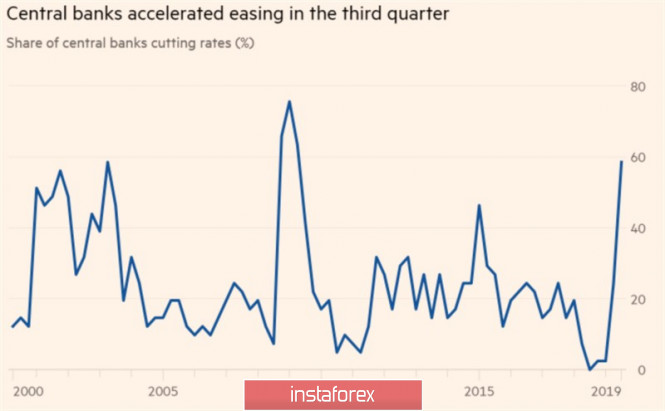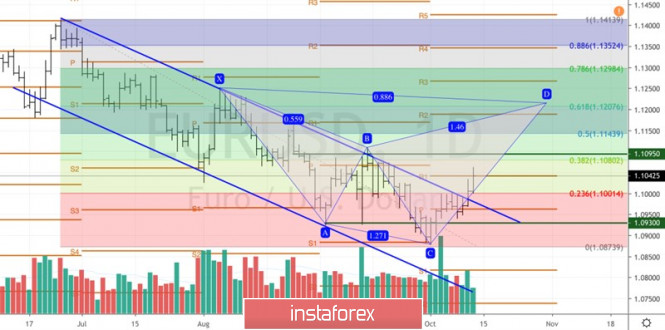
For a long time, investors have been puzzling over why the US dollar is strengthening despite the weakening of the Fed's monetary policy. They had a lot of trump cards: higher debt market rates compared to other developed countries, outperforming the S&P 500 over foreign counterparts, the US economy's resilience to trade wars and, finally, stable demand for safe-haven assets in the face of high political risks global scale. Also, competing central banks of the Federal Reserve also resorted to monetary expansion, which weakened their currencies.
According to the Financial Times, in the third quarter, 24 out of 41 central banks relaxed their monetary policy, accounting for 58.5%. We are talking about the highest rate since the end of 2009. Obviously, in the context of a slowdown in the global economy, lowering the rate is a necessary measure to maintain export-affected trade wars.
The dynamics of the share of central banks that reduce rates

After the September meeting of the ECB, much has changed. According to the minutes of the After the September meeting of the ECB, much has changed. According to the minutes of the meeting, many members of the Governing Council spoke against both QE and a 10bp reduction in the deposit rate. The program of quantitative easing in the context of historically low profitability of the European debt market is ineffective, and the deepening of rates in the negative area strengthens side effects. It is highly doubtful that the European regulator will add a new monetary stimulus in the next 3-6 months. If so, then it's time to buy the EUR/USD pair.
Rumors that there could be a way out on the Irish border issue and a tough Brexit can be avoided, as well as Donald Trump's optimism regarding the course of negotiations between the US and China deprived the dollar of another trump card – the demand for safe-haven assets. Data on business activity, producer and consumer prices have revived doubts about the resilience of the US economy to trade wars. If progress is seen in the relationship between Washington and Beijing, investors will pay attention to the assets of emerging markets. The overflow of capital from the States to Brazil, Russia, South Korea, and other countries will be another blow to the USD index.
Thus, the old-growth drivers for the US dollar cease to work, and without an escalation of the conflict between the States and the Middle Kingdom, it will be difficult for the EUR / USD bears to restore a downward trend. Donald Trump, an ardent supporter of the weakening of the US currency, has another reason for the deal. It can put an end to the slowdown of the US economy and contribute to the devaluation of the dollar amid growing global risk appetite. Washington and Beijing may sign a currency pact that will prevent the weakening of the yuan against the "American."
Technically, the exit of EUR/USD quotes outside the downward trading channel indicates the seriousness of the bulls' intentions. Buyers expect to activate the "shark" pattern and achieve its target by 88.6%. It corresponds to the mark of 1.1215.
EUR/USD, the daily chart
